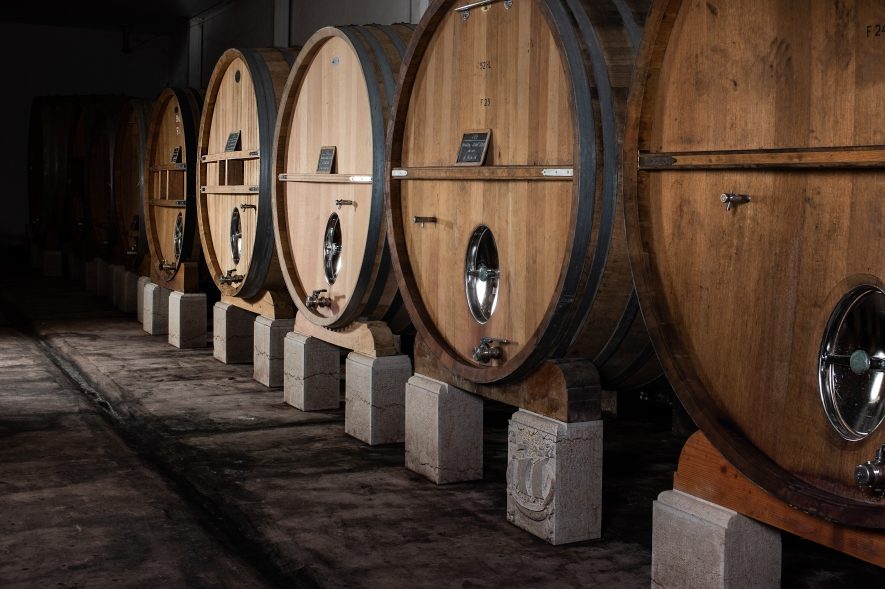According to the Book of Genesis, Man was not made to be alone. No, nor is wine. Just as man is (as Aristotle reminds us) essentially a social animal, incomplete without the society of his fellows, so wine requires food to flourish.
There are exceptions to these rules, no doubt, but they remain exceptions. Untangling this truth is one of the primary tasks that the distinguished wine importer and writer Kermit Lynch has pursued since he set up shop in the 1970s.
One of the most delightful books about wine that you will ever read is Lynch’s Adventures on the Wine Route, first published in 1988 and spruced up for its 25th anniversary a few years ago.
Physically, Lynch splits his time between Berkeley, California, where Kermit Lynch Wine Merchant has its headquarters, and Provence, France. Spiritually, I suspect, he is firmly ensconced in Provence, the wine region that he helped make famous to Americans, especially through his early enthusiasm for wines from Bandol, especially the delectable offerings from Domaine Tempier.
I’ll come back to Domaine Tempier in a moment. Since it is lunchtime now, I first want to return to the subject of food, especially as it bears upon the enjoyment of wine. Anyone learning about wine these days is subjected to innumerable ‘blind tastings’ in which several wines, their labels masked, are set before one. Sip, swish, suck in a bit of air, swish it around a bit more while peering intently into your glass and expectorate the lot into a waiting spittoon or (if suitably situated) upon the ground. Then tot up your impressions of its color, aroma, body, fruit and aftertaste and tick off corresponding numbers on a graduated scale of 1 to 10. Another wine, same drill.
This exercise is supposed to introduce an element of objectivity into the intrinsically subjective experience of tasting wine, and perhaps to some extent it does. It is one way to expand one’s library of wine experiences quickly, enabling one to be able to discriminate reliably between Cabernet and Pinot Noir, say, or St Julien and St Estèphe. But the habit has its liabilities, so much so that Lynch refers to the practice of blind tasting as ‘tomfoolery’:
‘Winning wines were invariably the blockbusters, wines loaded with tannin and alcohol, the more the merrier. Such wines are overwhelmingly impressive, particularly the first sniff and sip, which is what counts in a blind tasting. However, tannin and alcohol overwhelm the taste buds. One’s capacity to taste is physically impaired. For real-life drinking, at table where wine belongs, it is difficult to sustain one’s interest in tannin and alcohol.’
***
A print and digital subscription to The Spectator is just $7.99 a month
***
So here is the charcuterie with some chèvre, saucisson, olives and bread to nibble on as we open a bottle of Domaine Tempier’s 2019 Rosé (about $55), considered by many (including me) to be the best rosé in France (Robert Parker said the best in the world). The predominant grape is Mourvèdre, a noble fruit but one that had fallen out of fashion in large part because of its low yield. Lucien and Lucie ‘Lulu’ Peyraud were instrumental in reviving interest in Mourvèdre. They took over Domaine Tempier (‘Tempier’ was Lulu’s maiden name, the property a wedding gift from her father) in the late 1930s, and in 1941 had secured the coveted Appellation d’Origine Contrôlée for Bandol.
Lucien and Lulu transformed the reputation of Bandol and elevated Domaine Tempier into the first rank of wineries. They stepped back from active management of the business around 2000, leaving it in the hands of some of their seven children. As I write, Lulu is still going strong at 103. ‘I never drink water,’ she said in response to a question about her longevity. ‘I don’t want to rust. Only rosé, young red wine and Champagne.’
You will like this rosé: fresh, floral, herbaceous, deep, delicious. It is a perfect summer wine and also a perfect preface to dinner, which will be enlivened with the magnificent Domaine Tempier Rouge 2017 ‘Pour Lulu’ (about $60). It too is predominantly Mourvèdre (75 percent), along with 14 percent Grenache, a splash of Cinsault (9 percent) and a sprinkling of Carignan (2 percent). This is a rich, plummy but well-structured wine, full in the mouth, long in the finish. Savoring it, you can see why Kermit Lynch said of his first taste of Bandol that it was ‘one of the most fantastically delicious wines I had ever tasted’.
This article is in The Spectator’s August 2020 US edition.

























